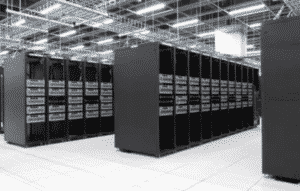Tesla and the Push for Vision in Self-Driving Cars
by Adam Pease
Tesla’s new supercomputer, “Dojo,” has been unveiled at CVPR 2021, the international conference for computer vision. Dojo clocks in at 1.8 exaflops of performance, making it one of the best in the world. This computer will be used to power neural network training for Tesla’s new vehicles, which will be based on computer vision AI alone. In this blog, we discuss the future of vision-only autonomous vehicles, and how they related to concerns about safety and accuracy in the field.
Computer Vision for the Autonomous Vehicle
Tesla’s announcement came with the information that the automaker would be leaving behind its reliance on lidar and radar for autonomous sensing, and relying exclusively on computer vision through its new supercomputer. For deep learning, this is a huge step forward, as it demonstrates that the classical solutions to sensing are not longer requirements if an AI model is fast, accurate, and scalable enough.
Tesla’s new Dojo supercomputer is likely one of the most powerful in the world. According to a recent interview, it has amassed more than one million videos that average about 10 seconds long. Each is auto-labeled through a computer vision system that learns to recognize hazards or other roadway contingencies to drive
Tesla’s new Model Y and 3 vehicles will be launching without radar, relying only on cameras, which the manufacturer boasted are faster and more accurate than previous methods. Still, some have raised questions about whether abandoning radar is the right call. Elon Musk himself even weighed in on the change with a Tweet, pointing out that there can be disagreements between radar and vision, and that the precision of visual AI is the tiebreaker in these situations.
Are Cameras Enough for Self-Driving Cars?
Undoubtedly, this move from a large computer vision player like Tesla bodes well for the place of AI in the self-driving car market. Nevertheless, there are limits to cameras that other sensing modalities can provide important backup support for. Poor weather conditions, for instance, can present serious obstacles. This is the reason Aragon has seen some new computer vision hardware providers moving towards alternative modes of sensor enablement, such as thermal imaging.
One advantage of depending on camera-based neural networks is that vehicles will require less location data to function. Currently, lidar-based autonomous vehicles depend on high volumes of map, traffic, and road data, which Tesla has proposed an AI-driven sensor could reduce our dependence on.
However, these same advantages may make others worried. Is moving towards complete AI enablement the right decision for self-driving, or would it be better to have a variety of sensor modalities that can back one another up? Tesla’s vehicles are admittedly error-prone in crowded environments, a serious flaw that the manufacturer is trying to address through better AI, but which also necessitates the production of better and better super computers like Dojo, a race that may have diminishing returns. It remains to be seen whether Tesla will be able to build a vehicle that will give its users full confidence, but it its underlying vision technology is undeniably improving.
AI Ethics: The Self-Driving Vehicle Conundrum
Self-driving cars were the way many were introduced to the power of computer vision, but the technology has struggled to facilitate widespread adoption. Regulations, the specter of tragic accidents, and the highly variable nature of roadways around the world have all been formidable obstacles to the acceptance of a self-driving future. Autonomous vehicles present a fundamentally new kind of problem for policymakers and everyday citizens alike.
They provoke chilling dilemmas such as the classic problem of a car that must decide which way to go between two groups of pedestrians. An interesting question to consider is whether advances in technology will ever deliver us from the difficult moral problems that surround planning for autonomous vehicles. Even with a highly optimized, accurate algorithm, the idea of a machine making decisions about who to crash into may cause the general public to rankle at freeways full of autonomous cars.
While we are still a ways from the future of consumer automobiles that Tesla envisions, every advance in artificial intelligence brings with it new possibilities for the use of autonomous vehicles in the enterprise, and in tailored, specific settings. Tesla’s vision-only move signals confidence in computer vision, which will move the sector forward as a whole.
Bottom Line
The bottom line is that while Tesla’s new announcement signals good things about the growth of the computer vision market, it is more unclear what the announcement means for Tesla’s autonomous vehicles. Despite impressive innovations in underlying AI, self-driving cars are still dogged by safety issues that will make the vast majority of buyers queasy.


Have a Comment on this?